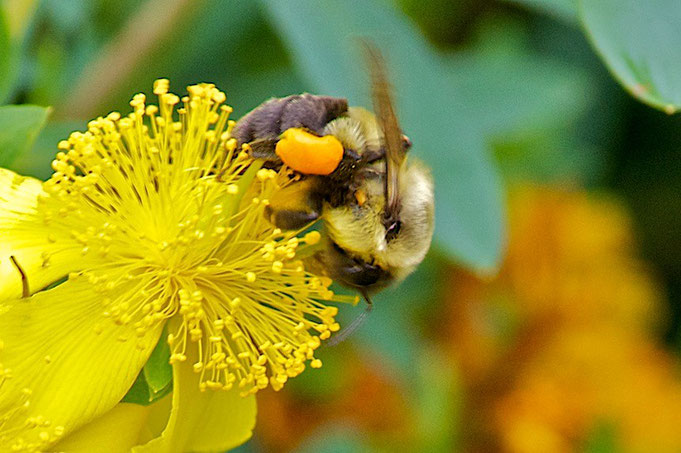A“Little Basket” of Pollen

Bees in the family Apidae, made up in part by bumblebees, honey bees, stingless bees, and orchid bees, all posess pollen sacs. The corbicula, Latin for "little basket", is a cavity on the rear legs into which pollen is placed.
The corbicula is a cavity surrounded by a fringe of hairs, into which the pollen is placed; most other bees possess a slightly different structure for collecting pollen called the scopa. It is made up of a dense mass of branched hairs on the hind legs and/or the abdomen as opposed to a cavity.

To fill the corbicula a bee moistens the forelegs with its protruding tongue and brushes the pollen that has collected on its head, body and forward appendages to the hind legs. The pollen is transferred to the pollen comb on the hind legs and then combed, pressed, compacted, and transferred to the corbicula on the outside surface of the tibia of the hind legs. A single hair functions as a pin that secures the middle of the pollen load.
The bee then carries the pollen in the pollen basket back to the hive where it is mixed with honey or nectar to produce what is called bee pollen.
Bees collect the pollen as a protein source to raise their brood. An average bee colony will collect about 40 to 120 pounds (20 to 57 kg) of pollen a year.
Thanks to Wikipedia for much of the above information.

